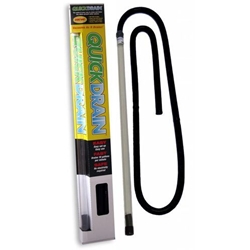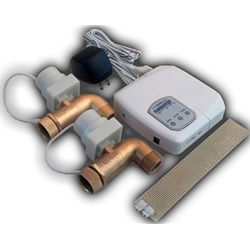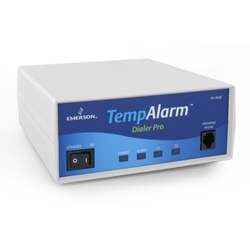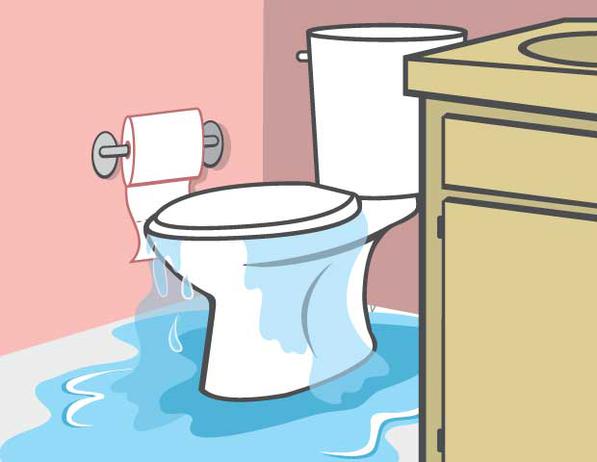If you want to reduce energy bills and avoid expensive emergency repairs this winter, here are some easy DIY projects to winterize your home. Although many home winterizing chores are best done in the fall, all of these projects can be tackled in the wintertime.  The results will benefit your bottom line, reduce maintenance chores when spring arrives, and increase your family’s comfort during the long, cold winter.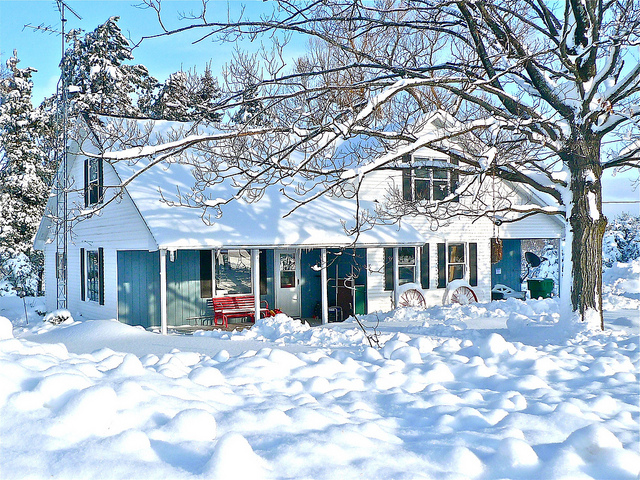
Keep the Cold Out and Heat In
- Inspect your home’s exterior doors, windows and other outside openings (like dryer vents and wiring) for drafts. Install weather-stripping and caulking where you detect cold air leaks. (Note that caulking installation is temperature-sensitive:  latex caulking should be applied in temps above 40 oF whereas silicone caulking can be installed in temps as low as -20oF.)  Apply heat-shrink window insulation film to glass windows to block drafts.
Â
- Remove window A/C units and store until spring or cover them with a special foam insulated cover to protect against drafts.
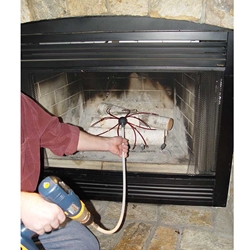 Keep the fireplace damper closed when not in use and replace the damper door if it is deteriorating. On a day when there’s no precipitation, use a do-it-yourself chimney cleaning system to remove soot and creosote from chimneys and flues. This will help prevent chimney fires and improve the efficiency of your wood stove or fireplace.
Keep the fireplace damper closed when not in use and replace the damper door if it is deteriorating. On a day when there’s no precipitation, use a do-it-yourself chimney cleaning system to remove soot and creosote from chimneys and flues. This will help prevent chimney fires and improve the efficiency of your wood stove or fireplace.
- Replace manual thermostats with programmable thermostats that will lower the heat automatically when you go to bed or to work and raise it when you return. (According to the U.S. Department of Energy, you can save 5% to 15% a year on your heating bill by turning your thermostat back 10° to 15° for 8 hours.)
Trim Threatening Tree Branches
- Tree branches weighted down by snow and ice can fall and take power lines with them or damage your house. Spend a couple of hours to trim tree branches that are growing too close to your house or electric lines.  A manual “pole sawâ€Â (a serrated saw on an extension pole) is recommended for this task.
Winterize Outdoor Water Lines
- It’s never too late to winterize your outdoor water system. Turn off all outdoor water faucets using the shut-off valves in the basement and leave faucet handles open to prevent freezing and cracking.
- Disconnect, drain and store garden hoses in the garage or shed. If they are already frozen, thaw and drain them in your bathtub before storing. If you need the hose during the winter months for pets or for filling an outdoor hot tub or pond, get a thermostatically-controlled rubber hose that you plug in for 20 minutes before using.
- Empty outdoor spas and whirlpools if you won’t be using them or don’t want the expense of heating them during the cold winter. Use a Quick Drain wand to quickly syphon water and remove debris at the same time.
Â
Protect Against Indoor Flooding
- Water pipes located in unheated areas of the home (such as attics, basements, crawlspaces and garages) are prone to freezing and bursting, so take the time to wrap them with insulated tape or flexible molded pipe sleeves.
- Sump pumps are an effective device to protect against catastrophic basement floods caused by high water tables, heavy rains or melting snow and ice. If your home has an electric sump pump without a battery backup, it won’t operate when there is a power outage. Add a cellular pump alarm to your system to receive a text message alert on your cell phone if your sump pump stops working due to a power outage or malfunction.
- To receive alerts of unwanted water near other appliances or on the basement floor, install a water alarm.
- To protect against messy damage caused by a leaky washing machine or hot water heater, install an automatic water shut off valve.
Prepare for the Inevitable Power Outage
- Stock up on bottled drinking water, non-perishable foods, batteries and firewood to get you through the next inevitable winter power outage.
- Other useful devices to have on-hand include a battery-powered weather alert radio; flashlights (including at least one hand-crank model); an emergency charger for cell phones and tablets; and automatic nightlights to illuminate key rooms and hallways.
- Connect appliances, computers and other valuable electronic devices to a surge protector to protect against power surges that can occur when electric service is restored.
Prevent Freeze Emergencies While You’re Away
- If you plan to travel extensively this winter or even if you’ll be away for just a few days at a time, look into getting a device called a  “freeze alarm†to monitor conditions inside your home and give you advance notice of falling temperatures and power outages. There are a range of freeze alarms to choose from, many of which can also be used to monitor things like water or motion.
Summary
Schedule a few of these easy DIY projects for the upcoming winter weekends and you won’t regret it when spring rolls around and you have fewer repairs to do around the house and yard. Â For more do-it-yourself products and ideas to winterize your home and automate your life, go to the diycontrols.com blog.


